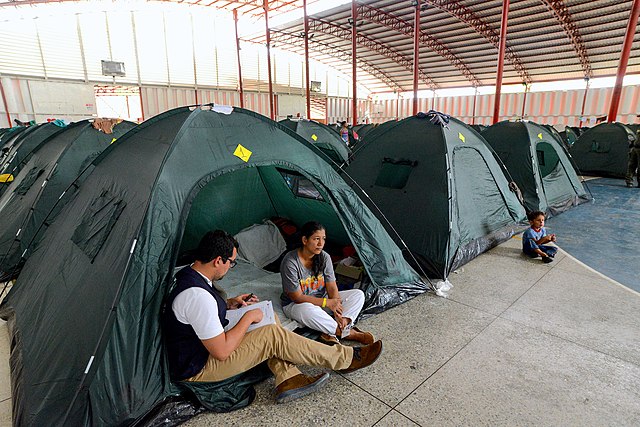
BY REBECCA SANTANA, AP News
WASHINGTON (AP) — A small town on the Texas border declares a state of emergency as tens of thousands of migrants cross the border. The Biden administration grants protection to nearly half a million Venezuelans in the country, giving them the ability to work. This comes after some Democratic mayors and governors warn that growing numbers of migrants in their care are busting their budgets.
The various scenarios playing out across the country paint a picture of a strained immigration system making an impact far from the U.S.-Mexico border. The Biden administration late Wednesday announced measures intended to alleviate the problems.
The U.S. has had immigration surges before so what’s different now, and why?
Part of the issue is that a lot more people are coming to the U.S. The numbers dropped earlier this summer after pandemic-era migration rules ended and tougher enforcement measures kicked in. But the numbers are climbing again.
On Wednesday, the border town of Eagle Pass, Texas, announced a state of emergency after nearly 6,000 migrants crossed the Rio Grande River from Mexico into the town of roughly 28,000 people in two days.
In fiscal year 2022, Border Patrol encountered 2.2 million people crossing the border illegally. The numbers have gone down in the fiscal year ending this month — about 1.6 million so far — but that’s still high.
You have to go back decades to see comparable numbers. From 1990 to 2006, Border Patrol encounters nearly always topped one million a year, with a peak of 1.6 million in 2000. Then the numbers began to fall. From 2010 to 2020, the agency recorded below half a million encounters a year, except for 2019 when they climbed to 859,501.
Statistics aren’t always a perfect measure, of course. The numbers from the 1990s and 2000s are considered vast undercounts because migrants often evaded authorities as they entered the U.S. Now, migrants often turn themselves in so they can request asylum.
In recent years, the measures used to contain the COVID-19 pandemic skewed the count. The government relied heavily on a public health tool called Title 42 to quickly eject people from the country. But there was no penalty so experts say migrants returned again and again, thus pushing up the statistics.
WHAT’S THE GOVERNMENT DOING?
The Biden administration late Wednesday announced it was giving Temporary Protected Status to an estimated 472,000 Venezuelans who arrived in the country as of July 31. That makes it easier for them to work in the U.S. Venezuelans make up such a large proportion of the people coming to the U.S. that changing their status has an outsized effect. In New York City, about 40% of the rough 60,000 asylum seekers the city is paying to house are from Venezuela.
The administration also vowed to speed up the time it takes for migrants who are already eligible to work to get their authorizations processed — a key demand from Democratic governors and mayors.
More broadly, the administration has relied on a carrot and stick approach over the last year to deal with immigration. That’s involved doing things like giving humanitarian parole to people from certain countries provided they have a financial sponsor and fly into the country. And then relying heavily on consequences for those who don’t follow the rules. For example, they have beefed up deportations and expulsions.
Republicans say it’s not enough and accuse the administration of doing little to control the southern border.
WHO IS COMING AND DOES THAT AFFECT RESOURCES?
Julia Gelatt, of the Migration Policy Institute, said there are key differences between what’s going on now and during past immigration surges.
In the late 1990s and early 2000s, there were more single adults coming to the U.S. Now, families with children are increasingly arriving, and they have different needs. While a single adult traveling by himself may be OK crashing on a friend’s couch, families often expect more for their children and may be more likely to need government services to protect them. Kids need to go to school.

